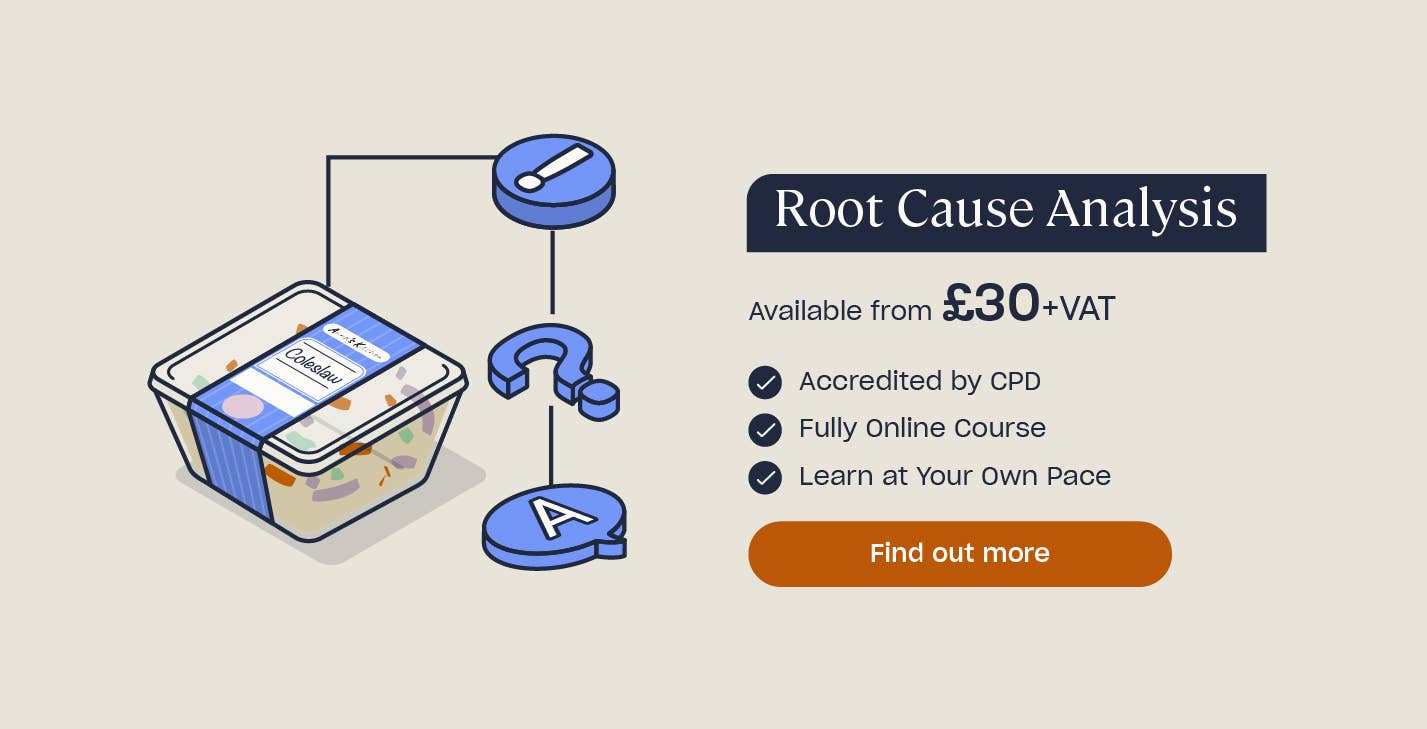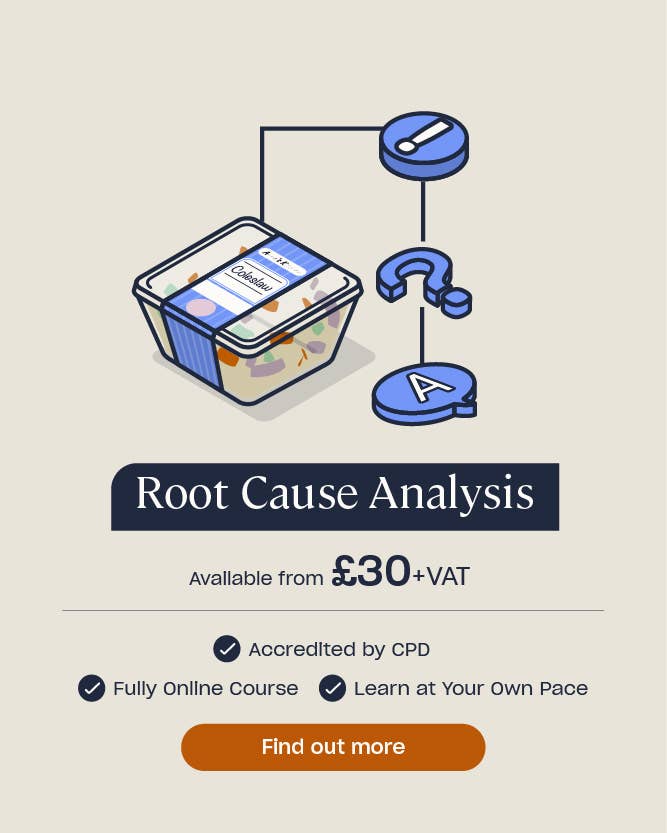How to Improve Quality Control in the Food Industry
According to the UK Government, the third greatest concern for consumers regarding the food they purchase is its quality. It is essential for food manufacturers to ensure that the products they distribute are of a consistently high quality. This will allow them to meet consumers’ expectations and maintain their trust and loyalty. In the food industry, having rigorous quality control procedures in place will help to ensure you achieve this.
In this article, we explain the importance of quality control in the food industry for ensuring the quality and safety of products. We also explain the difference between quality control and quality assurance within a food quality management system. Finally, we offer some examples of how you can implement quality control in your food manufacturing business.
What is Quality Control in the Food Industry?
Quality control is a process used in manufacturing industries, including the food industry, to ensure products consistently meet the necessary quality and regulatory standards to make them safe for consumers. A food product’s quality typically refers to its sensory attributes, including its appearance, taste, texture and aromas, as well as its nutritional content.

Quality control in the food industry involves testing and measuring food products throughout the production process. This is to ensure that they are meeting set specifications and do not deviate from these specifications. Specifications can relate to a product’s safety, nutritional value and sensory qualities. If products do deviate, this is considered a defect and would need to be corrected. The product may be removed or quarantined from production, before it can reach consumers.
Once problems are identified in the production process, steps can then be taken to identify why they occurred. Corrective actions can then be implemented to prevent them from reoccurring.
In the food manufacturing industry, quality control identifies risks in food products relating to their quality and/or safety. Even one food safety incident has the potential to cause permanent harm to a manufacturer’s reputation. Having effective quality control procedures in place to reduce the risk of contamination and other safety hazards will protect consumers. This will increase their trust and loyalty and reduce the risk of legal consequences.
Quality control is a reactive process, meaning it aims to correct defects that have already occurred. However, by identifying why defects occur, organisations can take proactive steps by implementing actions to prevent these problems from reoccurring.
Looking for a Course?
Root cause analysis is a form of reactive quality control. It identifies the root causes of product quality and/or safety issues so that actions can be implemented to eliminate or manage them, preventing those problems from reoccurring. Our Root Cause Analysis course teaches you how to perform a number of root cause analysis techniques as part of an incident investigation in the food manufacturing industry.
It is important to have quality control checks at the end of a production process. These will determine if the finished product has any defects that would make it unsuitable for consumers. However, it is also possible, and indeed preferable, to pick up on quality problems earlier on in the process.
Implementing quality control points throughout production allows manufacturers to identify non-conforming products more quickly. This reduces unnecessary costs from producing faulty products to completion.
There are a number of essential components that make up quality control for a food manufacturer. These include:
- Inspection – this involves examining raw materials, finished products and processes to identify any deviations from established quality standards.
- Testing – this involves conducting tests and measurements to assess various elements of products to determine quality.
- Statistical Process Control (SPC) – statistical techniques can be used to monitor production processes, ensuring they stay within expected quality standards.
- Corrective action – after identifying defects, this involves implementing actions to manage or eliminate them, preventing their reoccurrence.
- Documentation and records – it’s important to keep records of your inspections, testing and corrective actions as this can help during future investigations and shows due diligence.
- Training – employees must be trained to uphold the necessary quality standards.
- Continuous improvement – an effective quality control process should result in continuous improvement within a business.
Quality Control vs Quality Assurance
While quality control is one part of a food quality management system, quality assurance is another.
Quality control is a reactive quality management process that identifies and manages existing product defects. Quality assurance, on the other hand, is proactive. It involves implementing processes and equipment to prevent food products from becoming defective in the first place.
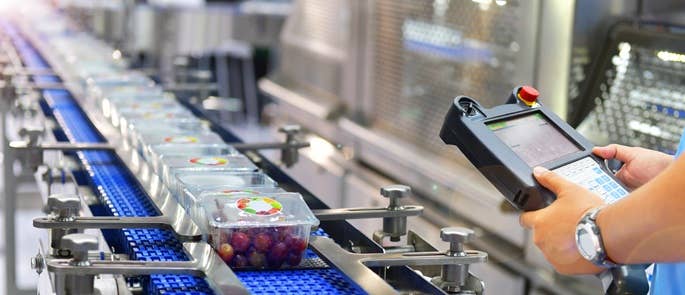
It ensures that production procedures are decided, prior to manufacturing, that will ensure products meet their required quality standards. It involves reviewing production to ensure these procedures are followed and these standards are actually met.
Quality control also ensure that a finished product complies with its label, according to specifications and regulatory requirements. For example, if a product’s label says that it is ‘sugar-free’, quality assurance would ensure that the product contains zero sugar or so little sugar that it is unlikely to affect the body.
Food manufacturers should have both quality control and quality assurance processes in place, as part of a quality management system. This will best ensure that food quality standards are consistently met by ensuring that problems are prevented before they occur, or identified and managed to prevent them from reoccurring.
What is the Importance of Quality Control in Manufacturing?
Quality control in the food industry helps to ensure that all products within a batch are consistent with one another and that their quality is consistently high.
This is particularly important in the food manufacturing industry where food quality can affect its safety for consumption. If unsafe food – for example contaminated or falsely labelled food – is distributed to consumers, this could result in a public health incident. Take, for example, the horsemeat scandal, which threw the vulnerability of supply chains in the food industry into the headlines and the public eye.
This could have significant legal, reputational and ultimately financial repercussions for an organisation and can result in a loss of consumer trust that would be difficult to regain.
It is therefore essential that food manufacturers have quality control procedures in place throughout the production process to ensure food quality and/or safety problems are picked up before products are distributed to consumers.
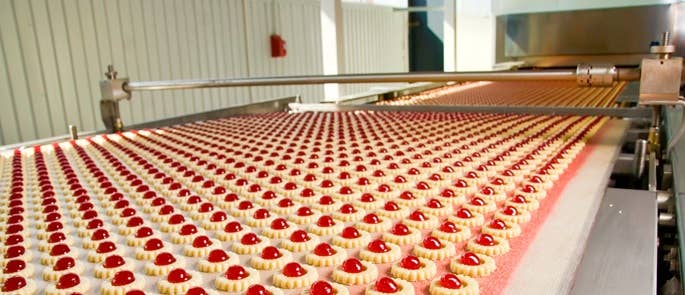
Having a robust quality control system in place as a food manufacturer can lead to improvements in the following areas:
- Consumer safety – quality control allows for the identification of safety defects in food products, such as chemical, physical or microbial contamination, including allergens. Were these to be missed, this could harm public safety and have severe reputational and legal consequences for the manufacturer.
- Consumer confidence – quality control ensures that the materials and processes used to create products are consistent. This helps to ensure that products in the same batch are consistent every time, regardless of who produces them. When a product is consistently safe and high-quality, this builds consumer trust, loyalty to the brand and positive word-of-mouth, ultimately boosting sales.
- Compliance – having quality control measures in place ensures that products conform with regulatory requirements and food safety standards. This protects manufacturers from the legal consequences of providing unsafe food to consumers.
When a finished product does not meet the specifications on its label, this is called food fraud. Committing food fraud is against the law. Quality control can prevent food fraud by ensuring that a product’s ingredients and processes match what is on its label. You can learn more about food fraud and the impact it can have on a food manufacturer in our article, What is Food Authenticity?
- Production costs – being able to catch food safety or quality issues during the production process reduces the time and money wanted on producing a defective product to completion. It also reduces the costs of product recalls and refunds from defective products as well as any costs resulting from legal action.
- Continuous improvement – by constantly monitoring the production process, implementing feedback and making changes to improve quality and safety wherever necessary, manufacturers can build a culture of continuous improvement. Creating more streamlined processes can result in increased productivity and efficiency.
- Employee engagement – along with the culture of continuous improvement, taking pride in the quality and safety of your products can increase your employees’ pride in those products and their workplace. This can increase work ethic and morale.
Examples of Quality Control in the Food Industry
As previously mentioned, quality control is a set of checks that should be implemented throughout the production process, from sourcing raw materials to the final check of the finished product. The more checks you do, the more likely you are to identify food safety and quality issues quickly.
Some examples of areas where quality control procedures should be implemented during the food manufacturing process are listed below.
Ingredient Specifications
The quality of ingredients used in a food product will determine the finished product’s overall quality. Ingredient specifications are written documents that provide information about a specific ingredient used in a product. They ensure that every ingredient provided by a supplier is high quality.
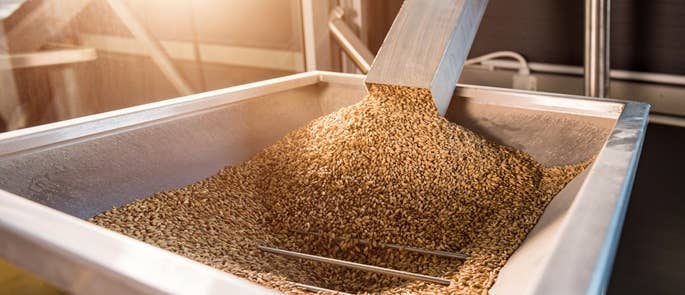
Ingredient specifications should include:
- The name of the ingredient.
- The source of the ingredient.
- A description of the product, including its physical and chemical composition.
- Delivery and storage requirements.
- Any restrictions on the use of the ingredient, including its shelf-life.
If you’d like to find out more about how to create an ingredients list, you can read our article, here.
Approved Supplier List
This is a list of suppliers who have been approved to provide ingredients or other raw materials to a food manufacturer. Approved suppliers generally offer high-quality materials that consistently meet regulatory requirements. Having an approved supplier list helps to ensure that the materials sourced for production are always high-quality, increasing the likelihood that the finished product will be, also.
An approved supplier list should include:
- The supplier’s name.
- The ingredient name.
- The supplier’s contact details.
- The ingredient code.
To learn more about what it means to be a reputable food supplier, check out our article ‘How to Choose a Reputable Food Supplier’.
Incoming Goods Inspection
This involves inspecting raw materials after they arrive at the manufacturing site and comparing them against the ingredient specifications. This inspection involves testing various properties of the ingredient, including its appearance, pH level and more.
If an ingredient does not meet the specifications, it should be quarantined and returned to the supplier. In this case, the supplier may need to be removed from the approved supplier list.
Product Formulation
Once the raw materials are approved, the product can be formulated. This involves establishing a set of production instructions and ingredients for manufacturing each product. These must then be monitored to ensure they are complied with.
This should include:
- Product name.
- Ingredient list.
- Ingredient percentage formula.
- Product weight.
- Batch size.
- Process time.
Having these instructions in place helps to ensure that those involved in production always follow the same process. This should, in turn, produce the same product every time, ensuring consistently high quality.
Manufacturing Procedures
These are instructions for exactly how to manufacture food products. They help to ensure foods are produced to a consistently high-standard, no matter who is producing them.
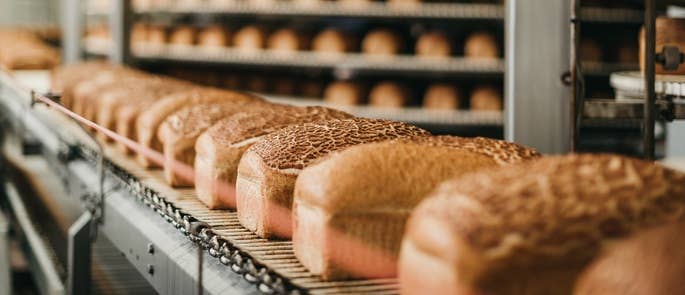
These instructions should include:
- How to transport and store ingredients and final products.
- The environmental requirements for the facility, such as temperature.
- The specific sequence for adding ingredients.
- Techniques for combining ingredients.
- Tool and equipment specifications and settings.
- Details of each member of the production team and their role.
- Quality control checks for the whole production process.
Label Specifications
Product labels allow consumers to make informed decisions about the food products they buy and consume. Food labels should accurately reflect what is inside the packaging, including ingredients, nutritional value, handling and storing instructions and allergen information. Quality control involves checking the finished product’s label to ensure that it accurately reflects the product within.
You can find out more about the regulations concerning product labelling in Britain at our article, here.
In-Process Records
In-process records are documents used to track the production process to identify and manage any safety and/or quality problems that could occur during it. This helps to ensure that the final product consistently meets its specifications.
At any stage during the production process, where it is identified that a hazard could occur that impacts food safety and/or quality, controls must be implemented to manage or eliminate them. These are known as Critical Control Points (CCP).
Identifying problems during the production process, rather than at the end, can mean less time is wasted producing a defective product to completion. Additionally, being able to identify when a problem occurred in the production process will make it easier to identify the root cause of that problem during a root cause analysis. This can then be managed or eliminated to prevent the problem from reoccurring.
In-process records will vary depending on an organisation’s specific facilities, production processes, environment and equipment.
There are a number of factors that must be documented as part of in-process records, including:
- Batch size.
- Processing time.
- Incoming and outgoing product weight.
- Appearance of product.
- Product pH level.
- Product moisture content.
- Product temperature.
Want to Learn More?
Internal auditing is a form of proactive quality control that will help to ensure that food quality and safety standards are being met and maintained throughout the production process. Our Introduction to Internal Auditing and Management Training course teaches food manufacturers how to identify areas that require internal audit and to implement effective auditing procedures.
Product Standards
These outline the accepted limits for a product, set by the manufacturer, on a number of sensory qualities, including weight, size, shape, colour, scent, texture and taste. They are a very specific description of what the final product should be like.
Recall Procedures
Food manufacturers must have a food recall procedure in place in the event of a serious product defect being identified after distribution. Should this happen, it is vital that consumers are protected from further harm. Even if this means a financial loss for the organisation, the reputational impact of a badly-handled public health situation is far more costly.
To ensure that a food product recall can be effectively implemented when necessary, manufacturers must have detailed traceability records in place. This will allow you to quickly and correctly identify what products may be affected and need to be recalled during a food safety and/or quality incident, thereby limiting exposure to affected products and possible harm to consumers.
Quality control is a critical process for ensuring food safety and quality. It is not just a single check over your finished product, but a series of checks performed throughout production, starting from the acquisition of ingredients and ending with assessing the final product. This continual process ensures that any safety or quality issues that arise are identified and managed as quickly as possible, ensuring the consistent safety and quality of your food products.
Further Resources:
- Promoting a Food Safety Culture: Free Assessment Guide
- Food Supply Chain: Importance and Management Strategies


